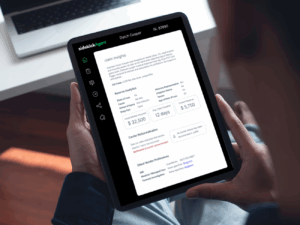May 10, 2023
As COVID-19 continues to linger and mutate three years after the emergence of a global pandemic, there’s still much we don’t fully understand about its impact — and critical issues are becoming more evident. Among the most problematic is long COVID, a condition with lingering symptoms and lasting implications for employees, employers, families and nations alike.
Many have experienced long-term, health-related changes that not only diminish their well-being but impede their ability to perform well or effectively return to work. Long COVID has already affected millions of workers, and in turn, a wide range of employers and industries. Employers need innovative and practical approaches for managing this condition.
Since last year, Sedgwick has participated in a thinktank convened by the Disability Management Employment Coalition (DMEC) to develop a path forward, share answers to difficult questions, recommend effective strategies to help employees with long COVID stay at work and return to work, and mitigate its adverse effects on workers and organizations. Here, I’d like to share some of the key solutions identified in the thinktank’s recent white paper.
Long COVID by the numbers
The statistics and trends are troubling. More than 40% of adults in the U.S. have had COVID-19 in the past. Most recovered within weeks, but millions have lingering symptoms three or more months after contracting the virus. Those who experience this post-infection illness report a broad range of symptoms that can be disabling, including chronic fatigue (reported by 80% of patients, according to CDC data), brain fog, shortness of breath, heart palpations and headaches. More than 200 symptoms have been associated with long COVID to date, and they’re often insidious and easily discounted.
While estimates vary on how many people in the U.S. suffer from long COVID — the term used to describe the disease when symptoms last beyond five weeks and can’t be explained by an alternative diagnosis — the U.S. Government Accountability Office (GAO) puts the number at 23 million. According to the Centers for Disease Control and Prevention (CDC), that’s about 1 in 13 adults — and recent data shows that more than 80% of those adults have some trouble carrying out daily activities.
Remaining or returning to work
The implications of long COVID extend far beyond the individuals experiencing symptoms; the condition profoundly affects families, employers, consumers, workforce absence management providers, third-party administrators (TPAs), payers and the healthcare system as a whole. Whether an employee remains at work or is returning to work post-infection, effective management strategies — particularly for accommodations and return to work — need to be developed and documented to maintain a productive workforce and support employees through a challenging time.
In the long-term interest of retaining talent, encouraging trial accommodations rather than leave should be the first line of action. The chances of returning to full employment after a six-month absence due to injury or illness is 55.4%; after two years, it falls to less than 5%. That alone is worth investing in research, programs and options that encourage stay-at-work and return-to-work initiatives in any form — from on-site accommodations to remote work.
Accommodations
Employers should prepare for an increase in job accommodation requests related to long COVID. As of 2021, long COVID was formally recognized as a disability (with certain limitations) under the Americans with Disabilities Act (ADA), so employers should be agile and responsive to providing accommodations that enable employees to perform essential job functions.
Accommodating employees experiencing brain fog, depression, anxiety or other mental health issues associated with long COVID is critical for everyone involved. When determining an accommodation plan, remember to think of the whole person — with physical, medical, emotional and social needs to support. A worker experiencing decreased stamina or fatigue could be provided ergonomic and pneumatic tools, periodic rest breaks or telework, while a worker experiencing light sensitivity could benefit from alternative lighting sources or simulated skylights. Options for addressing cognitive impairments and behavioral health may include task checklists or extended work breaks. Other reasonable accommodations may include flexible work arrangements, transitional work and reassignment to open positions. Employers should give an employee’s trial accommodation a chance, adjust it, and make modifications for a short duration.
No matter the accommodation plan, employers are encouraged to engage in an interactive process as they would with an employee performance situation. Collaborate with employees on the nature, severity, duration and resulting limitations of their extended COVID-related impairment. Ask your employees — who understand their job responsibilities best — to help identify appropriate accommodations for their positions. Thoughtfulness and sensitivity are critical, as employees may be hesitant to share their struggles.
Employer challenges
According to the 2022 DMEC Long COVID Pulse Survey, the biggest challenges facing employers in managing long COVID are employees’ lack of medical evidence of the condition and lack of diagnosis.
Naturally, employers want some type of medical substantiation for long COVID cases that progress to disability or result in excessive costs or sick days. But medically substantiating long COVID is vague, complex and difficult, and employees should accept the reality that “exceptions to the rules” may be warranted. Some employees lack access to primary care or have trouble securing appointments, with COVID rehab waitlists growing ever longer. Even those who seeing providers face obstacles because there are no diagnostic tests for long COVID and symptoms may be attributable to other underlying health conditions.
In addition to productivity losses, employers should keep an eye on claims to better prepare for the financial implications. According to Sedgwick’s U.S. workers’ compensation data, 80% of long COVID claims are moderately or severely complex from a cost perspective. Further, average incurred costs on long COVID claims are nearly 12 times higher than other COVID claims.
Emerging solutions
Employers can start by reviewing any existing enterprise-wide plans or programs related to managing long COVID. (Only 10% of DMEC survey respondents indicated that an existing program is in use.) Determine what policies are working well and what might fill in any gaps.
Solutions include instituting work-hardening/conditioning programs to aid workers in rebuilding stamina and skills to pre-illness levels. Flexible or graduated work schedules can help returning workers to ease back into productivity. Cognitive and physical fitness exams can determine whether workers are safely ready to work. Offer remote work whenever possible; allowing employees to work in a more comfortable environment will likely reduce long COVID-related leave requests.
Even as new programs are built out, consider ways to simplify existing processes. Medical forms are complicated and may not be designed to capture long COVID data. Encourage employees to use all available benefits, and enlist quality vendor partners to provide concierge-level assistance. Ensure the availability of materials that clearly explain what mental health resources are available. Educate management and frontline employees on issues and behaviors to note, support groups, onsite access to behavioral health support and other resources.
Although it is arduous, tracking and monitoring employees’ COVID status is important, too. Partner with an employee health vendor that has the technology to securely and efficiently track immunizations and COVID-related conditions. Make it a priority to know the status of each employee, and communicate why it’s important.
Caring counts
Broadly addressing the challenges of long COVID requires a new mindset about disabilities in general. Above all, management must ensure their work environment offers a supportive culture in which self-care and benefits utilization are encouraged, rather than viewed as a weakness or liability. Organizations must work to break down stigmas through education and communication, so every employee feels safe and supported.
> Learn more — read the full DMEC white paper, Long COVID: assessing and managing workforce impact and listen to the DMEC podcast, The Secret to Success with ADA & COVID-19: Agility and Innovation



